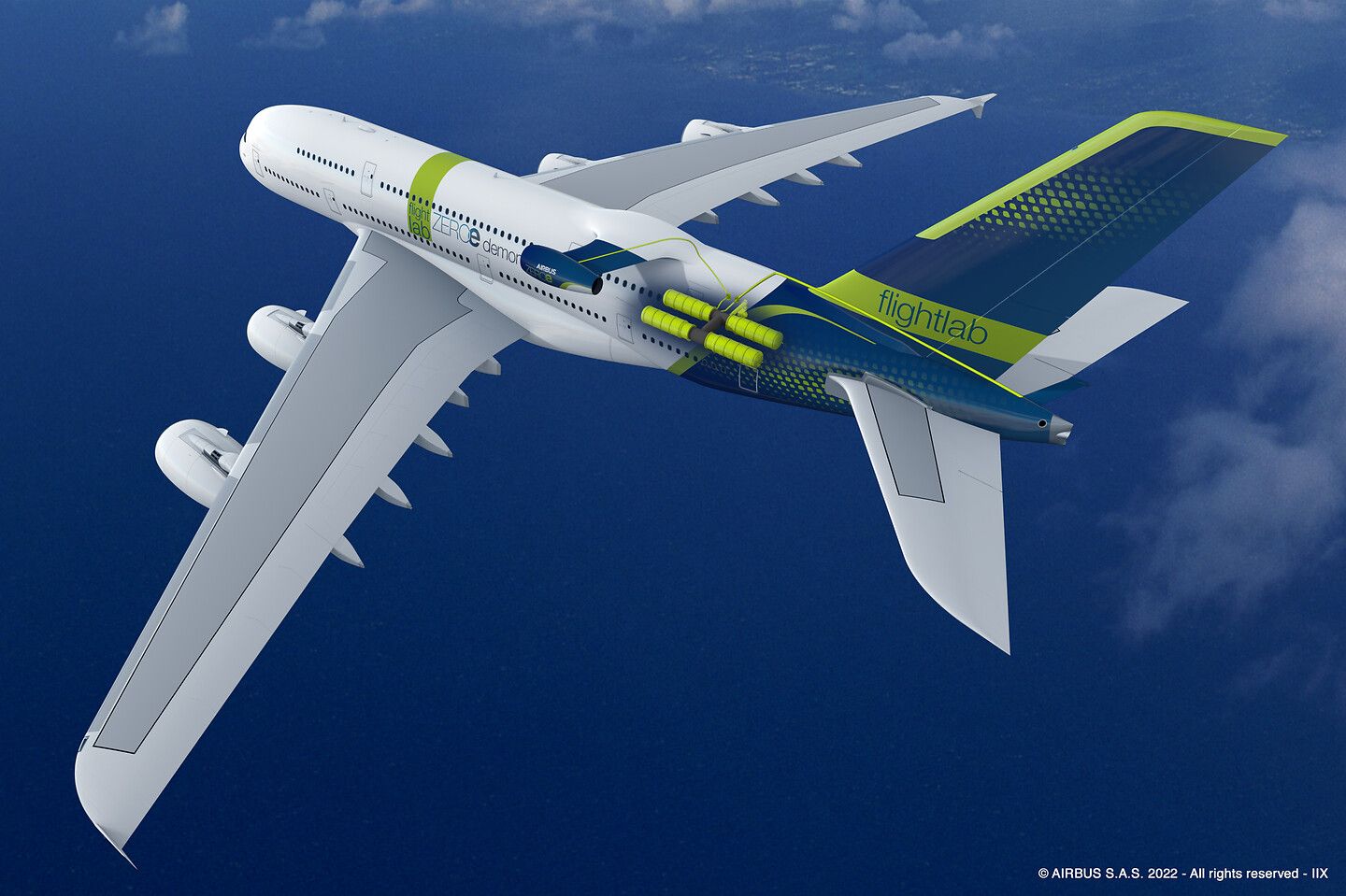Airbus has confirmed previous rumors that it will be testing hydrogen propulsion using the world’s biggest passenger jet, the A380. The European aerospace firm confirmed its intention at a press conference today.
The A380 will be fitted with a hydrogen engine developed by CFM International, a collaboration between Safran and General Electric. The engine is adapted from a current-generation CFM engine that is converted to run on hydrogen. According to the partners, Safran and GE have millions of hours of hydrogen experience between them, making them ideal partners for the project.
Airbus has set its sights on developing hydrogen propulsion aircraft by 2035 under its ZEROe project. While others peg their hopes for CO2 emission reduction on SAF and electric, Airbus has wholeheartedly thrown its hat into the ring for hydrogen.
MSN 001 to have the honor
Airbus' very first A380 to roll off the production line, MSN 001, is the airframe to have the honor of testing this groundbreaking technology. Since it was commissioned in April 2005, the 'original' A380 has remained with Airbus as a flying testbed, and continues to operate regular test flights for Airbus from Toulouse.
Now, while many A380 operators are consigning their aircraft to the annals of history, this particular bird will have an important role to play in the development of future aviation technology. Mathias Andriamisaina, Airbus ZEROe Demonstrator Leader, commented on the choice of aircraft, saying,
“The A380 MSN1 is an excellent flight laboratory platform for new hydrogen technologies. It's a safe and reliable platform that is highly versatile to test a wide range of zero-emission technologies. In addition, the platform can comfortably accommodate the large flight test instrumentation that will be needed to analyse the performance of the hydrogen in the hydrogen-propulsion system.”
The superjumbo has a huge capacity inside the aircraft, more than suitable for the four hydrogen tanks Airbus intends to store in its cabin. These four tanks will be built and delivered by Airbus' two Zero-Emission Development Centres, one in Bremen, Germany, and the other in Nantes, France, as well as from Madrid. They will be installed near the rear of the aircraft in a lengthways position.
As well as the hydrogen tanks, the modified CFM combustion engine and the liquid hydrogen distribution system, Airbus will be making a few more modifications to the A380. While the manufacturer hasn't shared specific details of these yet, they have said they will be adding cockpit modifications, as well as a throttle for the test engine and screens showing the key performance indicators for the tests.
When will it fly?
Although the announcement from Airbus today is exciting, it's going to be some time before we see MSN 001 taking off with its hydrogen engine in situ. The airplane requires some structural modifications to accommodate both the test engine and the tanks, and plenty of on-the-ground testing will need to take place before it can fly.
Airbus has indicated it intends to fly MSN 001 by 2026, giving it another nine years to refine the technology ahead of its ZEROe
goal of having a commercial plane powered by hydrogen ready for 2035. It's a long slow road, but today's announcement will be exciting for all sorts of reasons, not least because one of the most loved passenger jets has found a unique position to influence the future of aviation.

.jpg)
.png)

-2.jpg)